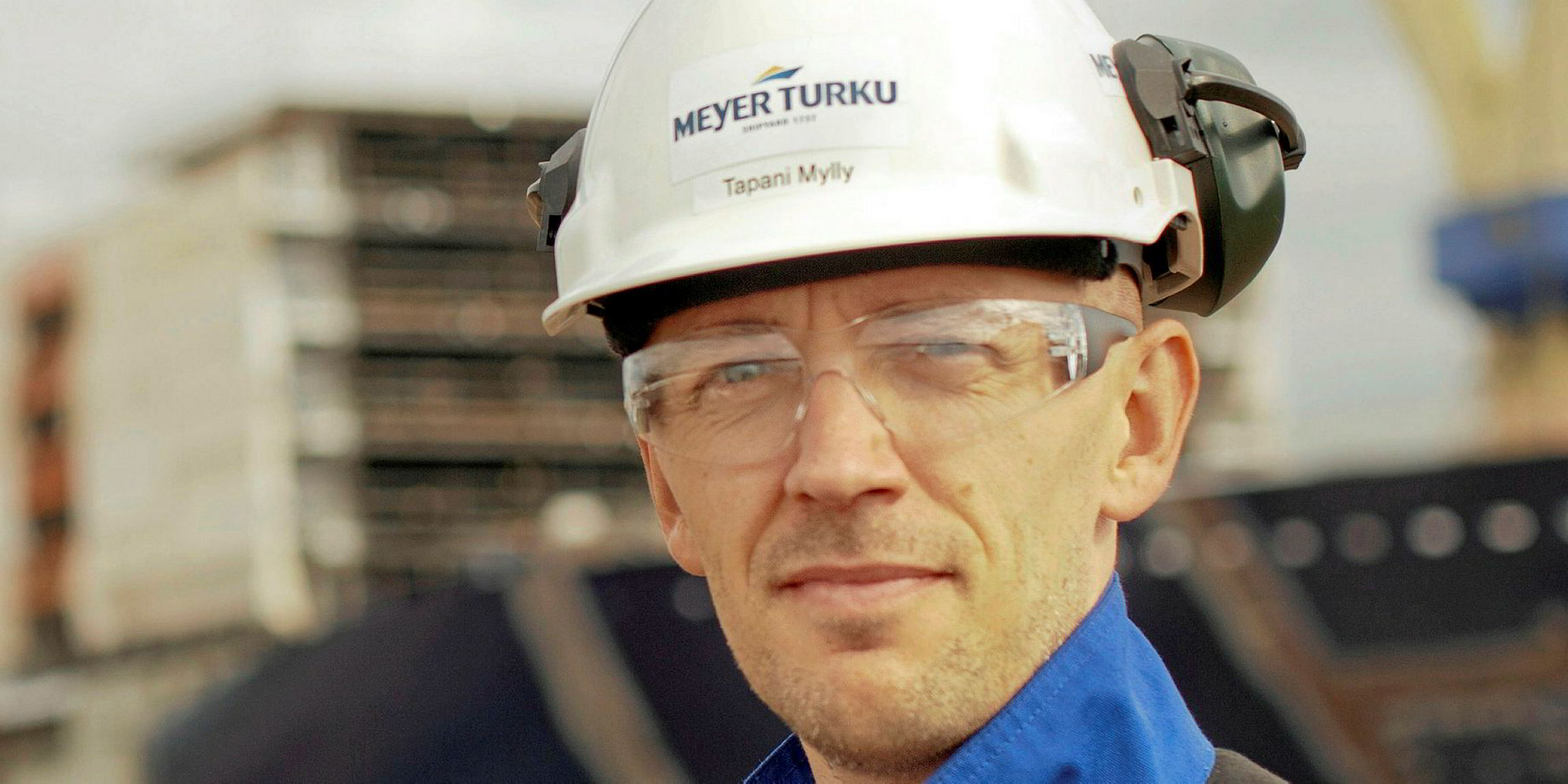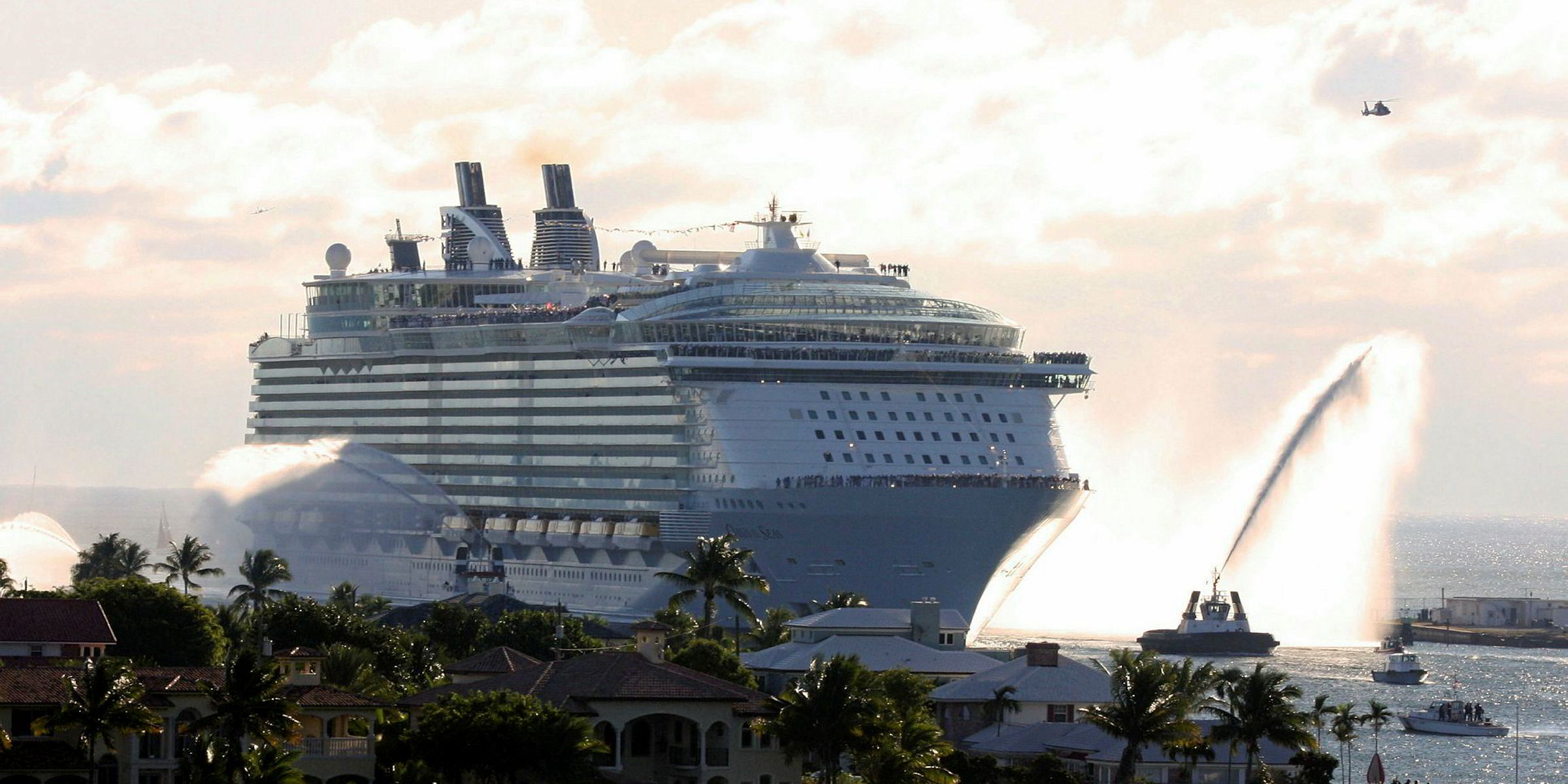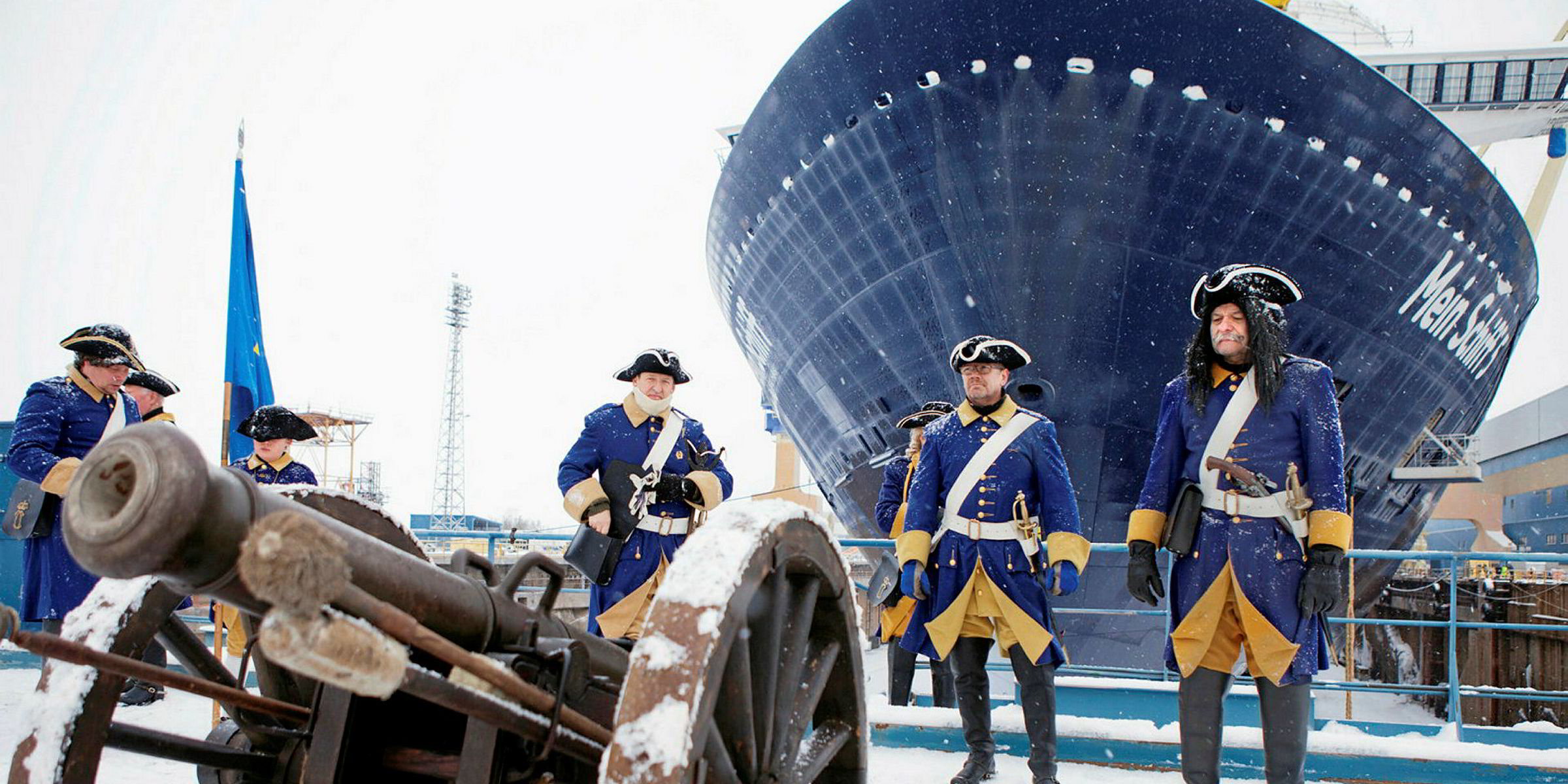Turku shipyard has seen a rebound in its fortunes since being acquired by Germany’s Meyer family in 2014.
The Finnish yard has a long, distinguished history of building cruiseships. But it passed through the hands of various owners and identities — Aker Finnyards, Aker Yards and finally STX Finland — before being bought by Meyer.
Internal problems with owner STX in South Korea had led to uncertainty among shipowners and a decline in the orderbook. At the time of the Meyer takeover, the yard had a single vessel under construction and an otherwise empty orderbook.
Two orders followed immediately after the takeover, and today Turku has a backlog of eight large cruiseships worth billions of dollars.
Meyer Group’s Papenburg yard in Germany has orders for 14 cruiseships involving Norwegian Cruise Line, AIDA Cruises, Royal Caribbean International, Saga Cruises, P&O Cruises and Disney Cruise Line.
“The biggest thing with Meyer [as shareholder is] we have the trust of the owners and trust of the banks in Finland,” Tapani Mylly, Meyer Turku’s communications manager, said.
The Finnish yard — whose chief executive is Jan Meyer, son of Meyer Group boss Bernard Meyer — is building the 111,500-gt, 2,894-passenger Mein Schiff 1 and Mein Schiff 2 for delivery this year and in 2019 for TUI Cruises.
A third ship under construction is the Costa Smerelda, the first of two 180,000-gt, 5,000-passenger, LNG-powered ships for Costa Cruises. Delivery is set for autumn 2019, followed by the sistership in 2021.
Then there are two LNG-fuelled 180,000-gt, 5,200-passenger ships for Carnival Cruise Line, each costing a reported $1.1bn.
The first delivers in 2020, the second in spring 2022, around the same time as the first of two 200,000-gt, 5,000-passenger Icon-class vessels for Royal Caribbean International, each costing a reported $1.59bn. Its sister arrives in 2024.

All Meyer Turku’s LNG vessels are dual-fuel. Royal Caribbean International’s duo will also feature fuel cells to generate power for their hotel section, a first for cruiseships.
A network of companies is involved in developing the fuel cells, together with the Papenburg yard and Royal Caribbean International.
Some test units are already onboard ships, including the 2,500-passenger/430-car ropax cruise ferry Viking Line’s Mariella (built 1985). The plan is also to have test units on other Royal Caribbean International ships before they are installed on the Icon-class newbuildings.
The Meyer Group acquisition has seen the launch of a €185m ($228m) investment programme at Turku, described by Mylly as practically a rebuilding of the yard into a modern, data-driven facility. One of the first major investments was a 1,200-ton-capacity crane that will be ready for operation this spring. It doubles the single-lift capacity at Turku, which already has a 600-ton-capacity crane, and enables the yard to construct bigger, largely outfitted blocks of four to five decks for lifting on to newbuildings.
The yard is responsible for constructing the main crane beam, with Finnish manufacturer Konecranes supplying the legs and other items. It marks a rare occasion that work has been outsourced in this way.
A big investment is also being made in plate and profile cutting, and in welding processes.
“It is a huge opportunity for us to improve, not only in machinery and facilities, but the whole process of building,” says Mylly.

The yard was originally built primarily for LNG tankers in the 1970s and investment by owners since then has been lacking.
Nevertheless, it has a long record in cruiseship construction, including the 5,400-passenger Oasis of the Seas, delivered in 2009 to Royal Caribbean International. At the time, it was the world’s largest cruiseship in terms of capacity.
The Meyer Group yards market jointly, but Turku has the advantage of constructing larger ships of more than 200,000 gt. Its dry dock is 365 metres long, just four metres longer than the Oasis of the Seas.
Mylly says cooperation between Turku and its German colleagues (Meyer Group also owns Neptun Werft) is increasing.
Since being acquired in 2014, the workforce has grown from 1,400 to well over 1,800. Recruitment continues, with 200 more expected on the payroll this year across the company, including designers and IT, logistics and project personnel, as well as blue-collar workers. So far there has been no problem finding staff, although Mylly stresses that the yard is competing with others for workers in the area.
On the technology front, Turku has long been in the vanguard of ice-class and LNG-fuelled tonnage.
Deliveries have included the 2,800-passenger cruise ferry Viking Grace (built 2013), which operates between Turku and Stockholm, and Tallink’s 2,800-passenger Megastar (built 2017), running between Tallinn and Helsinki.



